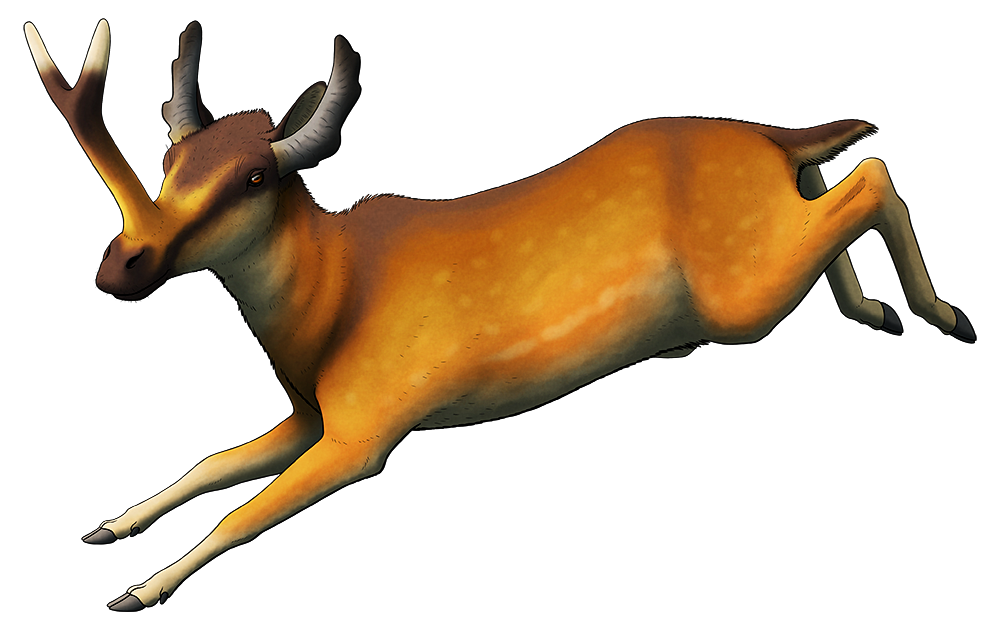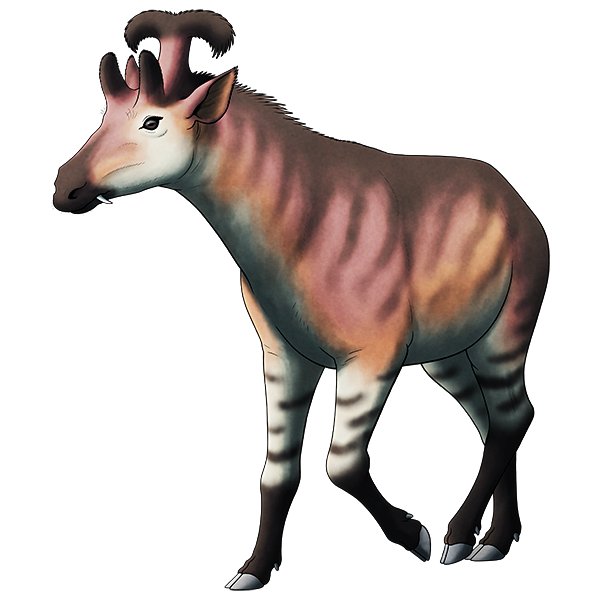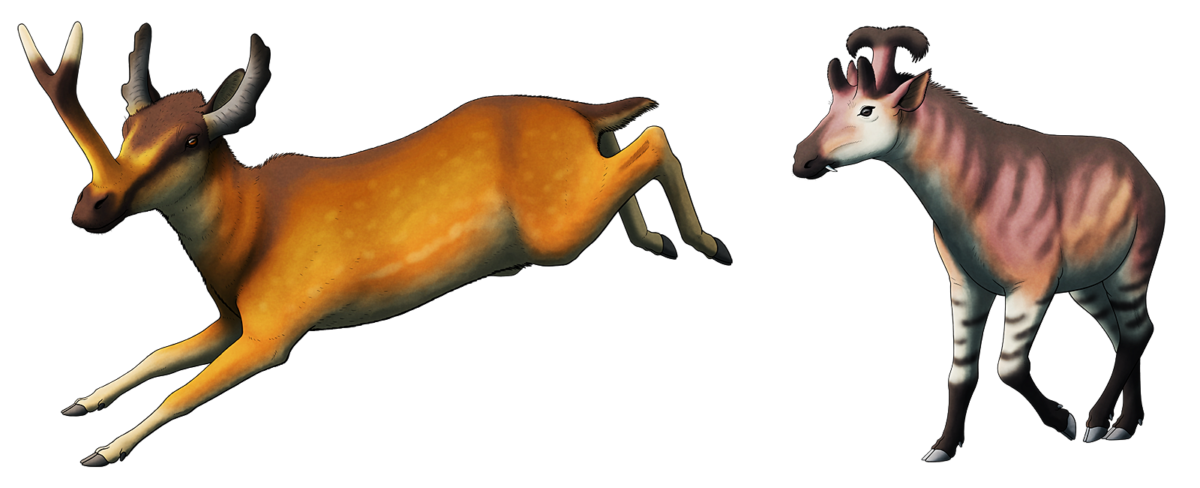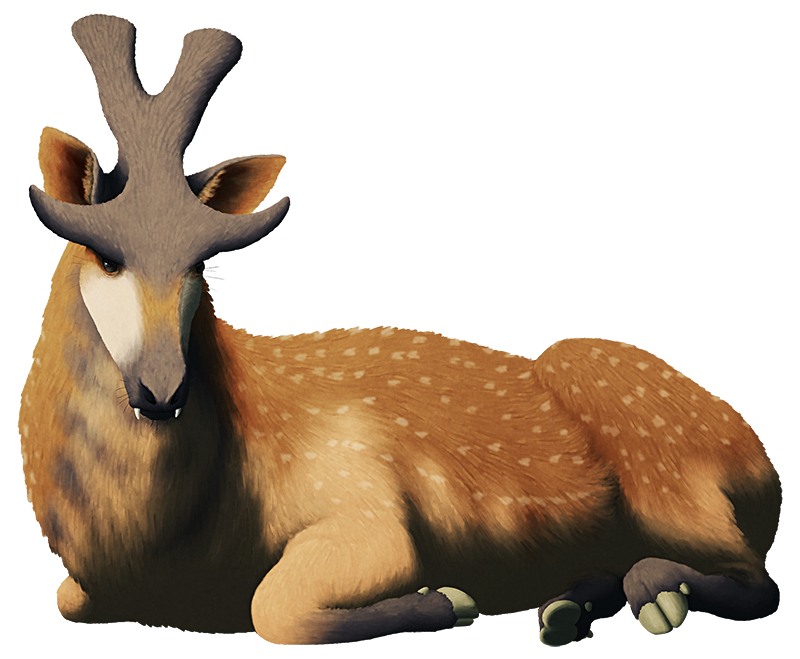Modern ruminants are the only living mammals with bony headgear, with four different lineages each sporting a slightly different type: deer antlers, bovid horns, giraffid ossicones, and the prongs of pronghorns.
We still don’t actually know much about the evolutionary origins of ruminant headgear, although a recent genetic study suggests they’re all derived from a single common ancestral structure (and that deer antlers started off as controlled bone cancer).
And some extinct species were even stranger.
The protoceratids were an early group of North American ruminants whose relationships are uncertain, but may have been related to modern chevrotains. They were convergently deer-like in appearance, with teeth adapted for grazing on tough grasses – and along with having a pair of horns in the usual position on their heads, males also sported an additional pair of ossicone-like growths on their noses.
Synthetoceras tricornatus lived during the Late Miocene, around 10-5 million years ago, and was one of the largest protoceratids, standing about 1.1m tall at the shoulder (3’7″). Its two nose-horns were partially fused into a single long structure with a forked tip, which may have been used for sparring in a similar manner to the antlers of modern deer.


Meanwhile on a different branch of the ruminant family tree, closer related to deer and giraffes, a group known as the palaeomerycids independently developed a similar sort of extra head appendage – but at the opposite end of their skulls.
These ruminants were a little more heavily built than the protoceratids, and specialized in feeding on soft vegetation in humid forest environments. They were a highly successful group, existing for almost 30 million years, ranging across Eurasia, Africa, and North America, and even ventured into South America during the early phases of the Great American Interchange.
Males had two giraffe-like ossicones above their eyes, along with a third crest-like one at the very back of their heads. In some species this formed a single central “horn” shape, while in others it forked out to each side. They also often had long saber-like canine teeth similar to modern water deer and musk deer, which were probably used for fighting while their elaborate headgear was purely for visual display.
Xenokeryx amidalae lived in Spain during the mid Miocene, about 16 million years ago. It stood around 0.8-1m tall at the shoulder (2’7″-3’3″) and had a unique T-shaped “handlebar” crest which ended up inspiring its genus name – a reference to the similar shape of one of Queen Amidala’s headpieces in Star Wars, which was itself based on Mongolian imperial fashion.




